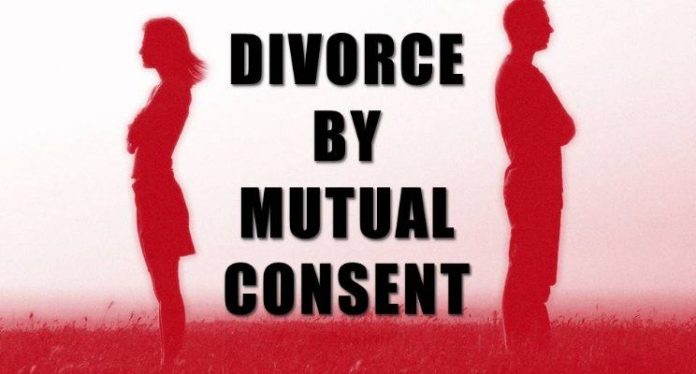This article is penned by Sarthak Gupta, a law student, Institute of Law, Nirma University. This article states the effects of waiving of a cooling period in mutual divorce and how the consensual dissolution of marriage can be the beginning of the new relationship.
Table of Contents
Introduction
The Supreme Court of India in the last year judgments gave birth to a new perspective on the proceeding in divorce cases under the Hindu Marriage Act, 1955. The issue of questioning the credibility that the cooling-off period prescribed under the Hindu Marriage Act for mutual or consent divorces is mandatory in all cases. Deciding the issue, the Supreme Court of India held that it had no discretionary power to override the explicit provision of the Hindu Marriage Act or any other statute. The court ruled that the clause of the Hindu Marriage Act allowing a cooling-off time of six months is not compulsory but just directory. Consequently, the family court in which the divorce proceedings are ongoing can, under extraordinary cases, suspend this time if other requirements are met, including the fact that the parties have been apart for longer than 18 months, that all counseling and conciliation attempts to reunite the parties have collapsed, that the parties have truly resolved their disputes, even in regard to alimony.
Legal Aspect of divorce in India
A divorce separation is among the most awful events for any couple. To add to this, it can likewise be a verbose and expensive undertaking in India if divorce is challenged. Indeed, even couples who commonly consent to the separation, in any case, must demonstrate that they have been isolated for a year. In India, Marriage is considered to be a very serious and sentimental part of life. The marriage process differs accordingly with religion. With a different process, the dissolution of marriage is different. The Hindus, Buddhists, Sikhs, and Jains are represented by the Hindu Marriage Act, 1955, Muslims by the Dissolution of Muslim Marriages Act, 1939, Parsis by the Parsi Marriage and Divorce Act, 1936 and Christians by the Indian Divorce Act, 1869. Marriages in civil and inter-community are administered by the Special Marriage Act, 1956 for dissolution of marriage where one of the partners is registered with another nationality. The dissolution of marriage law works with certain conditions and not in all circumstances. A partner can start to give a legitimate notification for separation to the next life partner before cutting off the marriage. Divorce laws in India are categorized into consensual divorce, contested divorce, and void marriages.
What is the cooling-off period?
In Section 13-B of the Hindu Marriage Act, 1955, the couples in marriage seek divorce by mutual consent through filing a petition in the court through a divorce lawyer. The Consensual Divorce states that both partners agree with peaceful separation. The dissolution of marriage through mutual consent is a straightforward method to dissolve it legally. Section 13-B(2) of the Hindu Marriage Act, 1955 states that for a statutory interregnum understanding, a cooling period of six months between the first and the last motion for divorce by consensual consent to explore the possibility of settlement and cohabitation. That statutory period is termed as the cooling period.
Stages of consensual divorce
The procedure of consensual dissolution of marriage in India can be initiated by a petition filed by the partners before the court under Section 13 B of the Hindu Marriage Act which ought to contain all the conflicts to fulfill the court with respect to the aspect of mutual or consensual divorce of the partners in regards to the dissolution of marriage. The petition for consensual divorce is to be acknowledged and filed by both the partners mutually before the honorable court.
- The stages are engaged with the recording of the procedure of consensual divorce in India. The first stage for dissolution of marriage, through a consensual divorce, in India is the filing of the petition by both partners jointly containing the obligatory substance identifying to grant the divorce alongside an affidavit by each partner as endorsed by law.
- The second stage for the procedure of consensual divorce in India commands the presence of both the partners before the family Court subsequent to recording the joint petition for consensual divorce alongside their counsels. The date is fixed by the Court, for the cooling period notification inside a couple of days after the filing of the petition for consensual divorce endorsed under the legislation endorsed.
- In the subsequent stage of the procedure of consensual divorce in India, the Court investigates the petition and the archives as documented by the partners. After fulfillment the court orders for the recording of the statement of the partners before the court on the pledge. Some of the time the court additionally endeavors compromise between the partners as the last possibility and in case of the disappointment of the compromise procedures, the matter is continued by the court.
- In the following stage of the procedure of consensual divorce in India, after recording the statement of the partners, the court passes the order on the first motion. When the First Motion of Separation is acknowledged by the court, the partners are required to record the second motion after the cooling period of six months and inside the endorsed time of 18 months from the date of introducing the appeal for first motion. After the passage of the statutory time of 6 months and the inside time of 18 months, the partners again file the subsequent motion following a similar procedure and show up before the court for the statement.
- The subsequent motion is taken up by the Court and the statements of the partners are recorded. After recording, the court, based on the statements of the partners and based on the factual scenario of the case, passes the orders and breaks down the marriage of the partners according to their petition, and a declaration of divorce between the partners is ordered to be prepared.
- In the final stage, the Court concedes the decree of dissolution of marriage, and the marriage between the partners is dissolved by the decree from the court.
The relevancy in cooling off period in divorce cases
The clearest preferred position of consensual divorce is its expense. Consensual divorce that stays uncontested is quite often the most economical method of dissolving the marriage. The minimal effort of the cooling period isn’t, be that as it may, but it is the main bit of leeway in consensual divorce. In the event that the degree of contention between the two partners stays low, a consensual divorce offers an approach to keep it that way. It is increasingly private, progressively helpful, and prone to keep a greater amount of your advantages in every one of your personal assets and out of the hands of legal counselors, and other required things in the procedure of the dissolution of marriage. Separation by consensual divorce expels superfluous squabbles and spares impressive time and money related assets. With the expanding number of uses being applied for a separation, a consensual divorce is the best alternative. Uncontested separation offers to separate from life partners the opportunity to end their marriage discreetly and with dignity.
When can it be waived off?
In the case of Amardeep Singh v Harveen Kaur, the Hon’ble Supreme Court held that, in the case of mutual divorce, the minimum cooling period of 6 months may be waived. Section 13B(1) concerns the Court’s jurisdiction and deals with the petition ‘s sustainability so that it can not be abolished. Section 13B(2), though, is administrative and should be repealed after having examined the details and conditions in each situation where there is a little possibility of reconciliation. The usage of Article 142, which was historically used by the Courts to suspend the time of situations of exceptional circumstances, is not mandatory. In Amardeep’s case, the court remarked that,
“In order to waive off the statutory waiting period of 6 months under Section 13B (2), the court needs to consider the following before making a decision: The statutory period of six months specified in Section 13B(2), in addition to the statutory period of one year under Section 13B(1) of separation of parties is already over before the first motion itself; All efforts for mediation/conciliation including efforts in terms of Order XXXII A Rule 3 CPC/Section 23(2) of the Act/Section 9 of the Family Courts Act to reunite the parties have failed and there is no likelihood of success in that direction by any further efforts; the parties have genuinely settled their differences including alimony, custody of a child or any other pending issues between the parties; the waiting period will only prolong their agony.” In these situations, one week after the first petition, the waiver application can be submitted, providing reasons for the waiver request. The Court may exercise its control regarding the second-period waiver.
Important case laws
Divorce by consensual divorce has arisen in recent times as one of the most sought after forms of securing a divorce. Section 13B of the Hindu Marriage Act, 1955 enumerates through a consensual divorce the legislation concerning divorce. One of the important fundamental requirements for receiving divorce through a consensual divorce is that all the partners, i.e. husband and wife, seek to receive a divorce.
In the case of Suman v. Surendra Kumar, the High Court of Rajasthan addressed this question for the purpose of the interregnum period which is intended to give the partner time and opportunity to reflect on their step. The partners or one of them may have second thoughts in this interregnum period to change their minds about the dissolution of marriage.
In the Sureshta Devi v. Om Prakash case, the Supreme Court of India held that the phrase ‘living separately’ connotes not living as husband and wife. It has no reference to where to live. The partners may live under the same roof and still may not live as husbands and wives. The partners should not wish to fulfill marital obligations.
In the Shikha Bhatia case vs Gaurav Bhatia & Ors case and in Avneesh Sood vs. Tithi Sood, the courts held that a partner who undertakes to comply with the consent given in the first motion for the dissolution of marriage pursuant to Section 13B(1) of the Act and for filing a second motion could not be allowed to withdraw from such an undertaking subject to an agreement reached between the partners and any effort to withdraw from such an undertaking. For a particular scenario i.e. Rajiv Chhikara vs. Sandhya Mathu, Delhi High Court Division Bench ruled that resiling from mediation is mental cruelty. The Court noted in the case that the partner had lived apart since 2009 and that their relationship was beyond repair. Therefore, under these situations, one partner demands that the marital bond be maintained and the same would be as putting the partner in an extreme mental abuse situation.
In the Sureshta Devi vs. Om Prakash case, the Supreme Court of India ruled that mutual consent is a sine qua non for passing a divorce decree and the said agreement must be binding and subsist until a final divorce decree is issued.
In the case of Dinesh Gulati v. Ranjana Gulati, where the appellant ‘s husband had recourse to contempt proceedings against the respondent/wife on a petition that the wife did not comply with the spouse, given a reciprocal agreement reported before the Family Court to break their union. Therefore, suo moto contempt proceedings against the spouse were launched by the learned Family Court for failing to comply with the consent decree. The Division Bench held that such an order to initiate suo moto contempt proceedings neglects the mutuality aspect provided for in Section 13B of the Act and once the partners were unable or unwilling to proceed with the consensual divorce, then the only recourse was to restore the original petition for divorce.
Another landmark judgment includes Smt. Smt. Sureshta Devi vs Om Prakash. In this case, the question that appeared before the Supreme Court of India was whether, at any period until a divorce decree is signed, it was open to one of the partners to revoke the consent given to the petition filed under Section 13B of the Act? The Supreme Court noted the divergent views of various High Courts. The Bombay High Court, Delhi High Court, and Madhya Pradesh High Court held that the critical time for divorce consent under Section 13B of the Act was when the first petition was filed and if consent was given willingly, no party could revoke the consent. On the other side, the Kerala High Court, Punjab, and Haryana High Court and Rajasthan High Court held that removing the consent granted to the petition at any period until the court passes a divorce decree is available to one of the partners. While reading Section 13B(2) of the Act and examining the divergent views held by the various High Courts, the Supreme Court accepted the views of the High Courts of Kerala, Punjab & Haryana and Rajasthan on the definition of Section 13B(2) of the Act.
The judgment in the case of Sureshta Devi was upheld in the case of Smruti Pahariya by a three-Judge Bench of the Supreme Court of India, wherein the Apex Court claimed that it is only on the continued reciprocal consent of the partners that a divorce decree can be issued by the court under Section 13-B of the said Act. Unless the motion for divorce is not properly dismissed and is left open, the court has a constitutional duty to consider the partners and ascertain their agreement on the day for which the court issues the decree. The court must be satisfied that there is mutual consent between the partners to certain tangible materials that demonstrably reveal such consent.
In the case of Smruti Pahariya vs. Sanjay Pahariya, the Apex Court held that agreement can not be inferred by the absence of one partner in court at the end of 6 months cooling off time in the petition for mutual consent to divorce. It was also held that courts can not infer a partner ‘s consent solely because both partners are signatories to the first motion pursuant to Section 13B of the Act. The honorable court continues under a duty to convince itself whether the consent given by the partners is a legitimate one before issuing a divorce decree.
In the cases of Shikha Bhatia case vs Gaurav Bhatia & Ors. and Avneesh Sood Vs. Tithi Sood, the courts held that a partner, who undertakes to comply with the consent granted in the First motion to sever marriage pursuant to Section 13B(1) of the Act and to transfer a second motion petition, cannot be permitted to revoke such an undertaking pursuant to an arrangement.
In Hirabai Bharucha vs. Pirojshah Bharucha, the High Court held that the courts had to make every effort to maintain the institution of marriage. That if an arrangement between the partners specifying the terms of settlement runs counter to public policy, then it must be regarded as void ab initio and in fact unenforceable and, in those cases, it cannot be recourse to contempt proceedings.
In the case, Mr. Prakash Alumal Kalandari vs. Mrs. Jahnavi Prakash Kalandari, the Bombay High Court ruled that where a petition is submitted for divorce through joint consent under Section 13B of the Act, the Court will convince itself that the consent granted by the partners persists until the date of the issuance of the divorce decree. And if one partner voluntarily withdraws its support, in view of the provision of Section 13B of the Act, the Court does not have the power to grant a divorce decree by mutual consent.
It was also established that one side cannot be permitted to arbitrarily revoke the consent until the declaration is signed because the other side had already behaved on the provisions of the consent either entirely or in part to its disadvantage. In other terms, the Court would have to be persuaded that: I there am adequate, reasonable and equal cause to require the party to revoke its consent, or the party must be required to agree and reprove; (ii) the other party does not experience permanent discrimination as a consequence of withdrawal of the consent. If this twin requirement is not met, the Court should be reluctant to entertain the prayer so that the party can unilaterally withdraw its/her.
In another landmark case of Amardeep Singh v. Harveen Kaur, the Supreme Court rendered a noteworthy statement by holding that it is not compulsory to wait/cool off 6 months as proposed under section 13B(2) of the Act. The Supreme Court held that the time of interregnum or cooling off of 6-18 months provided for in Section 13B(2) of the Hindu Marriage Act, 1955 is not mandatory but a clause of a list, which may be waived in such circumstances. Furthermore, the Court noted that, in view of this, courts may exercise their flexibility, based on the facts and circumstances in each event, and waive the stipulated time in which there is no chance in resuming cohabitation and alternative recovery is possible. T groups have resided apart in this situation since 2008. In 2017, the partners reached a settlement and by mutual consent, applied for divorce. In the event, the partners appealed to the Court to suspend the 6-month span required by Section 13B(2) of the Hindu Marriage Act, 1955, on the ground that they have resided separately for the last eight years and there was no chance of their reunion.
In a recent case decided by Allahabad ‘s High Court, the Court held that in cases where the consent itself is disputed and is not said to be genuinely the same, an appeal may be brought against it. It would be relevant here to shed some light on the law that prevails in the context of an appeal against a decree passed with the consent of the partners. Section 19(2) of the Family Court Act, 1984 forbids the submission of an appeal against a decision that was issued with the partners’ approval. Hence, the Court’s underlying problem was whether an appeal should reside under Section 19 of the 1984 Family Courts Act against a judgment enacted through a common agreement pursuant to Section 13-B of the Hindu Marriage Act, 1955? In consideration of the details and circumstances of the event, the Court holds that a consent judgment or decision can not be assaulted by appeal, but if the agreement itself is challenged and is not claimed to be real, bonafide or safe, it is the Court’s sacred obligation to perform an inquiry in this respect before attempting to enact a divorce decree.
Conclusion
Consensual divorce is the stage where the partners dissolve their relationship on their own. The relationship of every marriage is different, yet giving a new perspective in the consensual divorce, this cooling-off period will have a positive impact on society through legislation. In society, whenever a marriage gets a divorce, we only think about the suffering of the children, but sometimes breaking the broken relationship and living with dignity is much more significant in one’s life. Divorce with mutual consent is the most effective way to dissolve the marriage keeping in mind about the future impact, both partners break their marriage with a goodbye with new relationships as friends.
References
LawSikho has created a telegram group for exchanging legal knowledge, referrals and various opportunities. You can click on this link and join:
https://t.me/joinchat/J_0YrBa4IBSHdpuTfQO_sA
Follow us on Instagram and subscribe to our YouTube channel for more amazing legal content.
 Serato DJ Crack 2025Serato DJ PRO Crack
Serato DJ Crack 2025Serato DJ PRO Crack











 Allow notifications
Allow notifications



